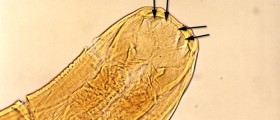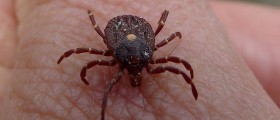
The Monarch butterfly is a milkweed butterfly in the family Nymphalidae. Botanical name for this butterfly is Danaus plexippus. Milkweed butterflies are actually a subfamily Danainae in the family Nymphalidae. These butterflies usually lay their eggs on a variety of milkweeds to feed their larvae by the leaves of these plants. Monarch butterfly is the most common butterfly species in the North America. Today we know this butterfly is also widespread in New Zealand and Austria, where people call it Wanderer. It is also native to some parts of Europe.
Description of Monarch butterfly
Monarch butterfly is recognizable by characteristic tawny-orange upper side of the wings, intersected by the black veins and margins. The black edge of the wings is set with two rows of small whitish spots, and few orange spots near the tip. The bottom side of the wing looks similarly, but it features a bit lighter, yellow-brown color and larger spots. The span of the wings ranges somewhere between 3½ to 4 inches. Male butterflies are a bit larger than females, and their black lines on the wings are slightly narrower. Monarch butterfly has six legs, but it carries two front legs against the body, leaning on the rest of four legs.
The life cycle of Monarch butterfly
There are four principal stages in the life of a Monarch butterfly. Similarly, in one human year four generations of Monarch butterflies will complete their life cycles. The life cycle starts with the egg, progressing to the stage of larvae, then to the stage of pupa, and finally reaching the adult butterfly stage. The first stage in the life cycle begins in February and March, when hibernating Monarch butterflies wake up to start mating. When the mating season is over, the butterflies migrate north and east to find appropriate milkweed pants and lay their eggs. When the eggs are laid, the first stage completes.
It will normally take about four days before the eggs begin to hatch and the little larvae start eating the milkweed and growing to form an adult full-grown caterpillar. The development usually lasts for two weeks, and when the caterpillar reaches the full size it starts seeking for a place to attach itself and start the process of metamorphosis.
During the metamorphosis, the caterpillar attaches to a stem using silk and transforming into a chrysalis. It seems like nothing happens in 10 days of this phase, but actually, inside of the chrysalis, the rapid change will take place to form a body of a butterfly that will eventually emerge and fly away. The full-grown butterfly feeds on flowers and lives about two to six weeks. The first generation will die after laying eggs for the second generation.
- Photo courtesy of Joyce cory by Flickr: www.flickr.com/photos/99003655@N00/3033189224/

















Your thoughts on this
Loading...